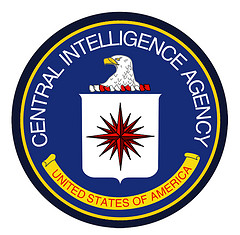 Previously published at GBH News.
Previously published at GBH News.
The documentary “Atomic Cover-Up” begins on an oddly hopeful note. In December 1945, four months after the bombing of Nagasaki, Lt. Col. Daniel McGovern was leading a film crew through the rubble when he picked up the strains of “Silent Night.”
“I heard voices singing,” he says, adding that at first he thought he was imagining it. He wasn’t. He and the crew set up their equipment inside the cathedral where the voices were coming from and began filming. We see a priest and children singing.
“And I look out and see complete devastation,” McGovern says. “And hear the voices.” The singing continues as the camera pans across the ruins of a city that had been utterly destroyed by the second of two atomic bombs dropped by U.S. forces.
Written and directed by the journalist Greg Mitchell, the recently released “Atomic Cover-Up” is the culmination of a decades-long quest to release footage of the human suffering caused by the atomic bombs dropped on Hiroshima and Nagasaki in August 1945. Mitchell himself put years into the effort, writing a book about it in 2011 whose subtitle refers to “the greatest movie never made.”
Well, now it’s been made, and the terrible images captured after the bombings — including color film seen for the first time — are a testament to the lives lost and ruined. It is the visual equivalent of John Hersey’s classic 1946 New Yorker article and book “Hiroshima.” (The 52-minute documentary can be seen online through Tuesday, March 30. Details are below.)
The story is told mainly by McGovern and Lt. Herbert Sussan, who died in 1985, possibly from exposure to radiation, and to whom the film is dedicated. They as well as Japanese filmmakers set about documenting the human suffering caused by the bombs only to have their work censored and suppressed.
When Gen. Douglas MacArthur, the leader of the American occupation, ordered the Japanese footage confiscated, the Japanese made a copy and hid it in a ceiling. “We knew that we risked a long sentence in a U.S. military prison,” says one of the filmmakers, Ito Sueo.
McGovern and Sussan, meanwhile, were blocked from releasing their footage because the U.S. military had classified it, preferring to show images that depicted the destruction of buildings but leaving out the price paid by the people on the ground — the overwhelming majority of them civilians, many of them women and children.
Sussan later worked for CBS and NBC, where he implored the likes of Edward R. Murrow, Chet Huntley and David Brinkley to help him get the footage released. He even tried to enlist the help of the president who ordered the bombings, Harry Truman. All of it was to no avail. Over time, though, the footage was declassified. In 1967, Japanese films seized by the U.S. were repatriated. And so began the long process of bringing these unsettling truths before the public.
For more than three-quarters of a century, we have debated whether it was necessary to use atomic weapons in order to bring about an end to the war in Japan. There’s crucial context that must be considered — atomic bombs had never been used before, so it was hard to imagine that the U.S. would hold back from unleashing a powerful new weapon in what was total war. The conventional bombing of Dresden, Germany, in February 1945 had claimed 25,000 lives. At the time, dropping atomic bombs on Japan must have seemed like just another ratcheting-up of the war effort.
Yet we soon knew better. More than 100,000 people were killed immediately in the two bombings, and nearly as many were injured. We learned about the horrors of radiation poisoning. And — let us hope — we learned that humankind can never use such weapons again.
Mitchell, who has long argued that the bombings were unnecessary, tells us toward the end of the film that U.S. military officials and Gen. Dwight Eisenhower himself believed that the Japanese would have surrendered in a matter of months even if atomic bombs hadn’t been used. Thus, in Mitchell’s view, we all bear moral responsibility for what happened to the people of Hiroshima and Nagasaki.
There is much in “Atomic Cover-Up” that’s difficult to look at. Perhaps the most gut-wrenching scene is that of a teenage boy who is lying on his stomach, every bit of skin peeled off his back so that his muscles are fully exposed. We are told that he was kept alive in what was essentially a penicillin bath, and that doctors persisted with their efforts despite the boy’s pleas that he be allowed to die.
Yet that leads to a moment of grace as moving as the sounds of “Silent Night.” We later learn that the boy survived and, as an adult, became an anti-nuclear activist. There are very few moments in the film that transcend despair. As a viewer, I found myself holding on to such moments as a way to get through the rest of it.
Mitchell has brought to us a story that is both excruciating and of paramount importance. Everyone should see it. We have never come to terms with the horror of what was done in our name in August 1945. People of goodwill can differ over whether we did the right thing in order to bring a terrible war to its conclusion or if, instead, we committed unforgivable crimes against humanity.
What none of us can do is look away.
How to watch: “Atomic Cover-Up,” written and directed by Greg Mitchell, may be seen for two more days, today and on Tuesday, March 30, as part of the Cinejoy Virtual Film Festival, where it premiered on March 20. Click here to purchase tickets and view the film. Mitchell is working on plans for further distribution and asks that anyone interested send him an email; his contact information is here.



 Three examples from Sunday’s New York Times of political coverage that makes you want to bang your head against an immoveable object until you’ve forgotten what you’ve just read:
Three examples from Sunday’s New York Times of political coverage that makes you want to bang your head against an immoveable object until you’ve forgotten what you’ve just read: